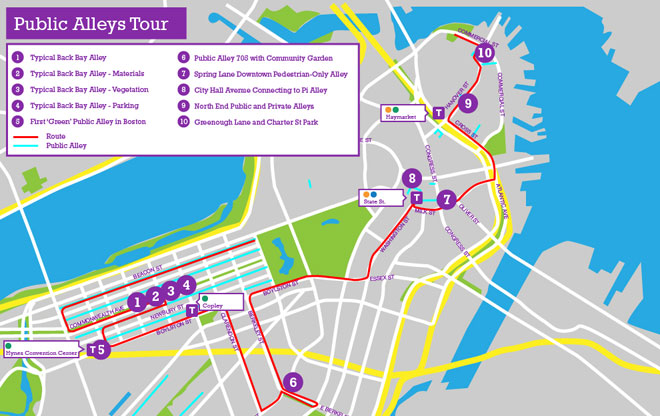
Bicycle Tour Route
This six-mile bicycle tour begins at the Boston Public Garden and then traverses through Boston’s Back Bay, South End, Downtown, and North End neighborhoods.
Image: ASLA 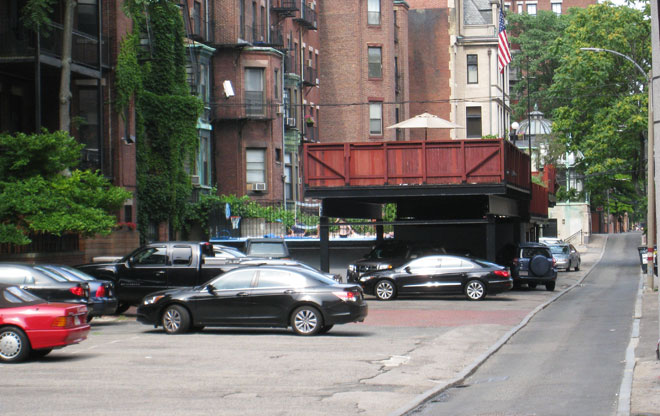
Back of House
In the Back Bay, public alleys run mid-block between each street, extending from the Boston Common to Massachusetts Avenue, forming the most continuous network of public alleys in the city. An asphalt road is flanked by narrow sidewalks, abutting residential and commercial properties. Private parking spots, gardens, and decks line the corridor, which is also the site of waste collection, utility lines, and back-of-house access.
Image: Mary Lydecker / Jeremy Martin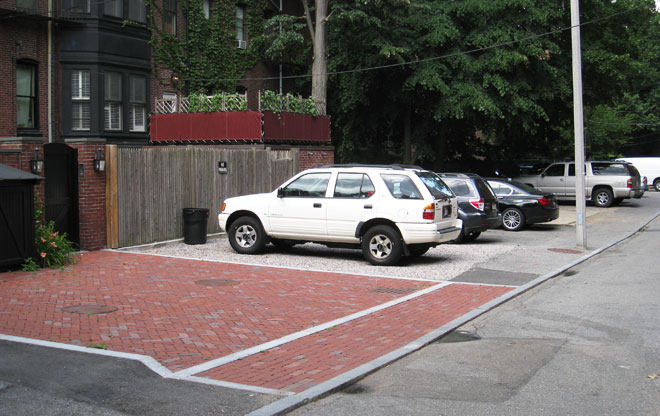
Public and Private
The publicly maintained asphalt roadway, with granite curb and sidewalk, abuts privately maintained zones, where residents must make collective or individual maintenance decisions. Materials range from brick or cobble to concrete, gravel, or open permeable pavers. In recent years, the remaining private alleys have generated contention, as residents are responsible for the cost of maintenance, while still allowing public access.
Image: Mary Lydecker / Jeremy Martin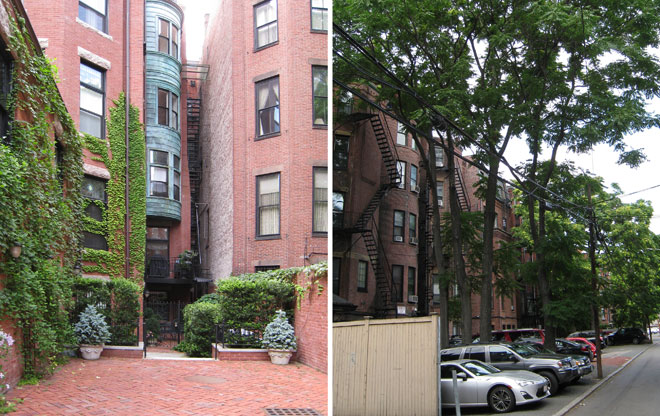
Thriving Nature
Private gardens, patios, and decks line Back Bay and South End public alleys, some of which are governed by historic district mandates. Virtually all of these alleys are the site of thriving volunteer communities. Tree of Heaven (Ailanthus altissima) colonies alternate with carefully tended urban gardens, and Boston Ivy (Hedera helix) sprawls up walls and fire escapes.
Image: Mary Lydecker / Jeremy Martin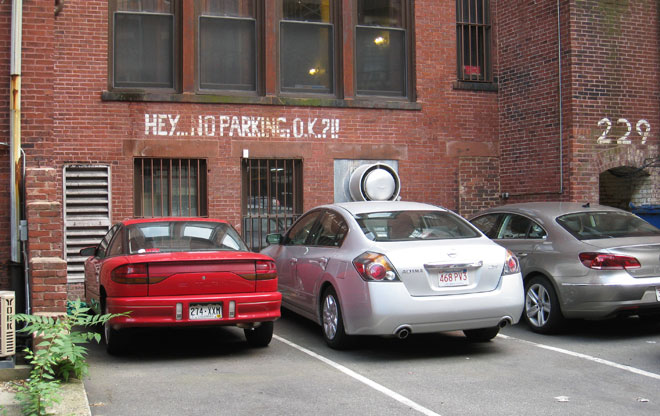
Record Prices for Parking
Private residential and commercial parking spots line many public alleys. Two tandem front and back parking spots in Public Alley 431 were auctioned for the record price of $560,000 in June, 2013.
Image: Mary Lydecker / Jeremy Martin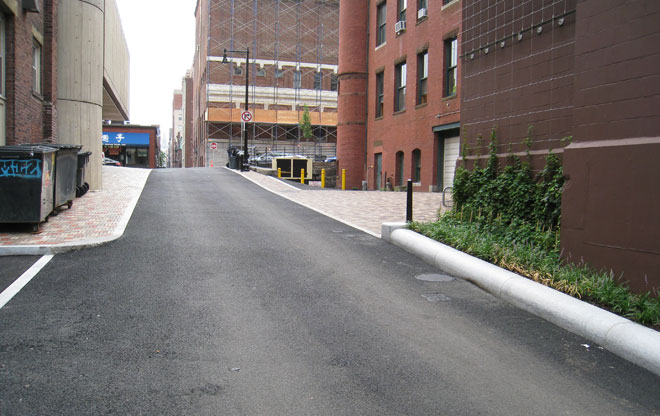
An Innovative Green Alley
The first "green alley" project in Boston is located in Alley 444. Through an initiative of the Boston Architectural College, a portion of the alley has been repaved in porous asphalt and porous pavers. A planting zone includes a green screen trellis system. Future proposed improvements include the installation of open loop geothermal wells. Boston’s public alley network is a prime candidate for a city-wide "green alley"program, similar to those implemented in Chicago, Seattle, and Los Angeles.
Image: Mary Lydecker / Jeremy Martin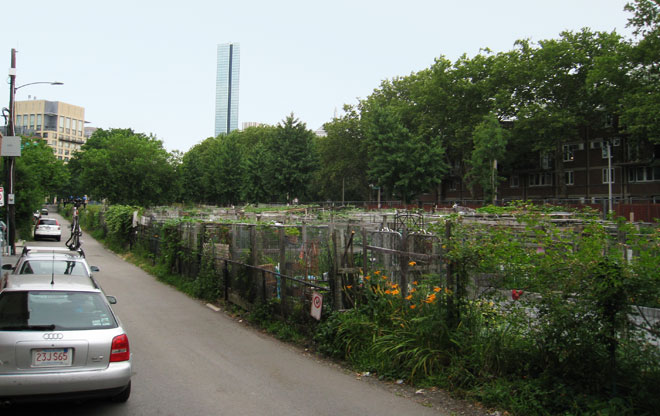
A Garden in Perpetuity
On the east side of Public Alley 705 in the South End, the Berkeley Community Garden is open to the public during daylight hours. Formerly a block of brick row houses, demolished during Boston’s period of urban renewal, the garden emerged as residents began cultivating the open lot. Acquired by the South End Lower Roxbury Open Space Land Trust in 1991, the Boston Natural Areas Network currently owns the deed to the garden, to remain a community garden in perpetuity.
Image: Mary Lydecker / Jeremy Martin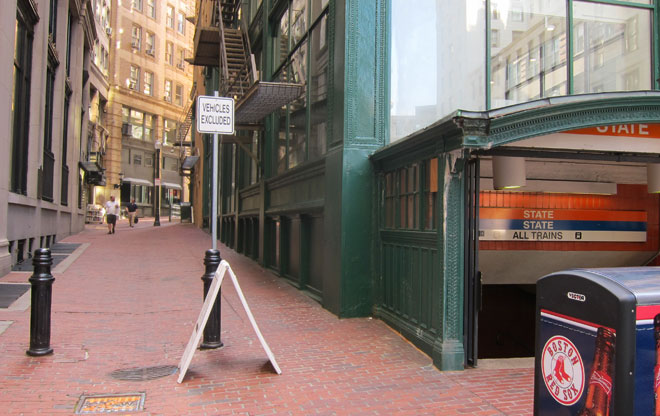
A Quiet Pedestrian Passage
In the core of the downtown, public alleys are often pedestrian only. Spring Lane is a quiet passage linking Washington Street to Devonshire Street, with a bookstore at the bend of the lane.
Image: Mary Lydecker / Jeremy Martin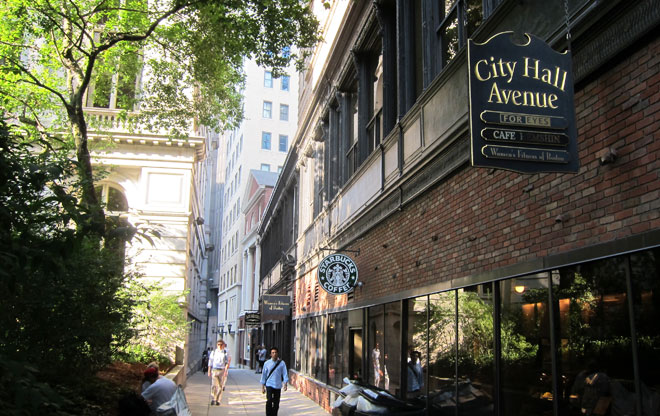
Historic Downtown Alleys
Some of Boston’s oldest public alleys can be found in downtown, where they largely function as pedestrian foot paths, with limited or no vehicular access. Pi Alley and City Hall Avenue, located off Washington and School streets, form a pedestrian commercial and retail corridor, with shop and bar entrances interspersed with kitchen back doors, parking garage access, and waste collection. City Hall Avenue is open on the west to the Old City Hall Grounds.
Image: Mary Lydecker / Jeremy Martin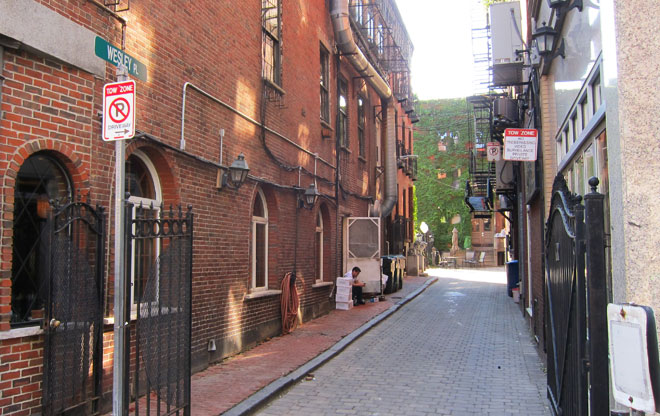
North End's Rich Network of Alleys
The narrow, winding streets of the North End include a rich overlay of alleys, both throughways and dead ends. Tucked between restaurants, apartments, and shops, it is often difficult to discern between the public and private alleys. Displaying a collage of infrastructure along its vertical faces, Wesley Place in the North End extends from Hanover to dead end in private property.
Image: Mary Lydecker / Jeremy Martin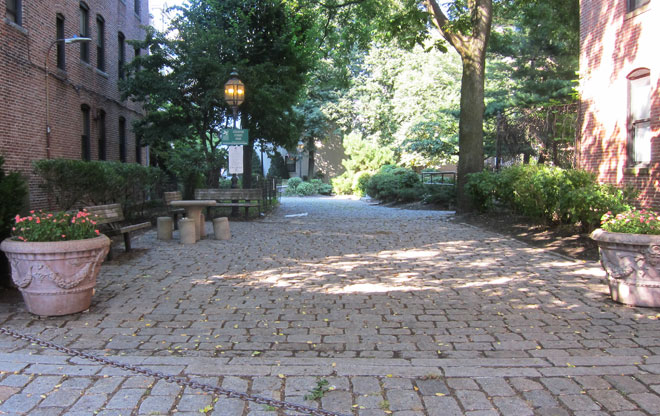
The Elusive Alley
Demonstrating the elusiveness of some of Boston’s public ways, Greenough Lane is part alley and part pocket park. Extending from Unity Street, Greenough Lane opens into Charter Street Park, a quiet neighborhood park, before narrowing down into a more typical alley to connect through to Commercial Street.
Image: Mary Lydecker / Jeremy Martin